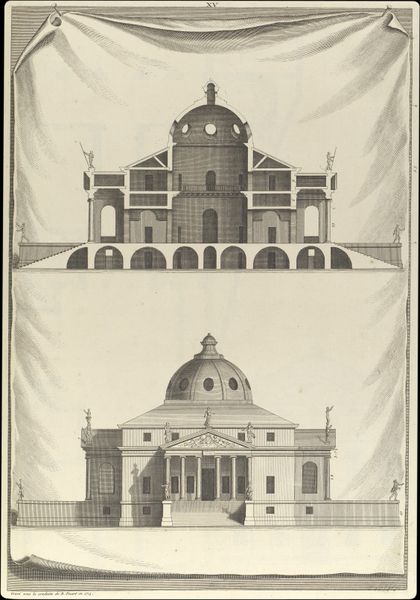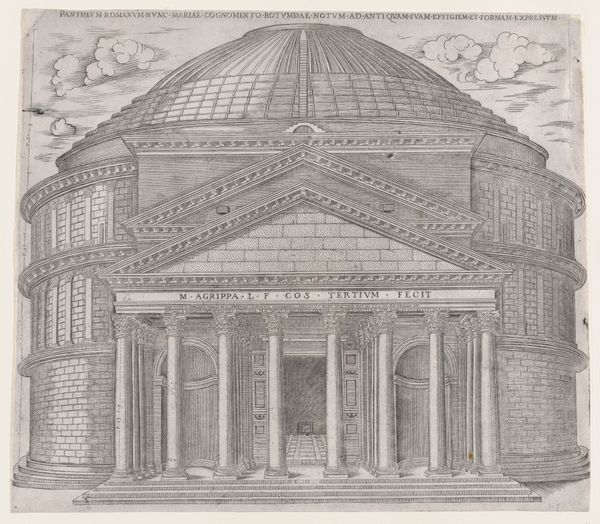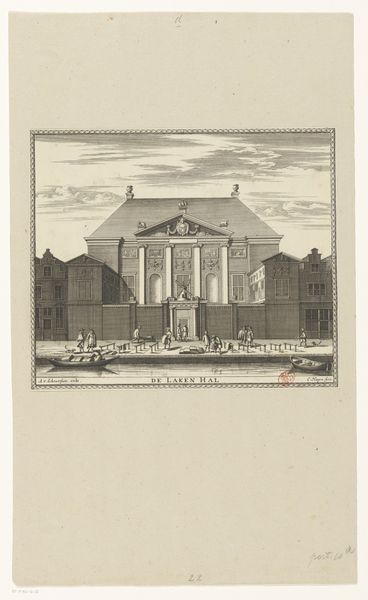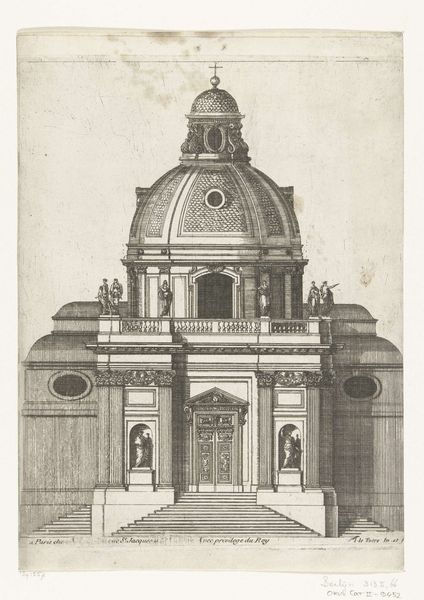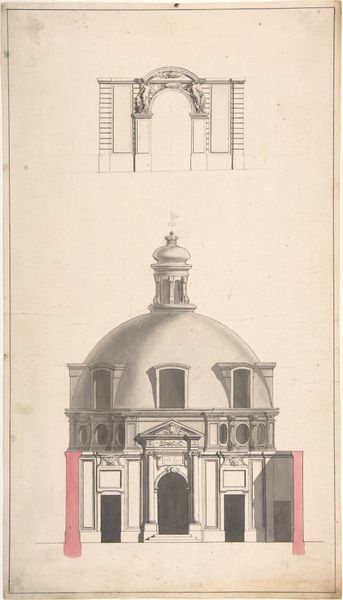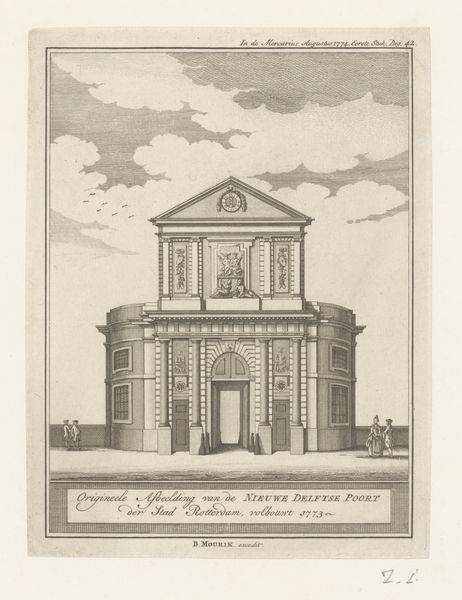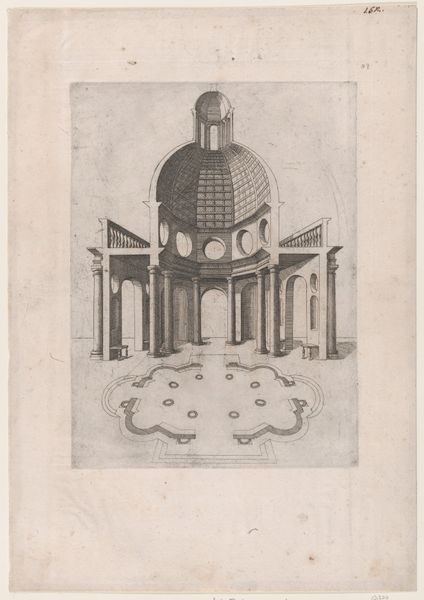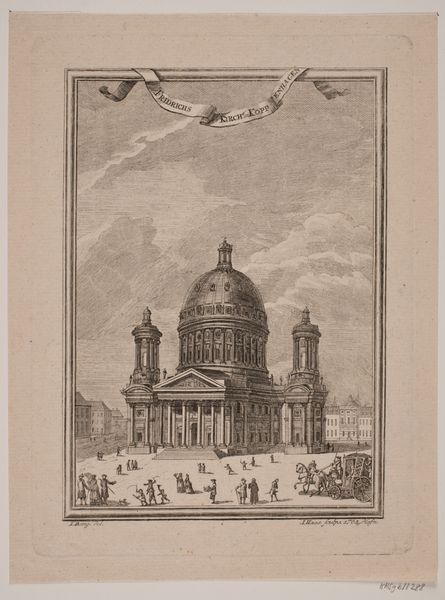
engraving, architecture
#
dutch-golden-age
#
line
#
cityscape
#
engraving
#
architecture
Dimensions: height 614 mm, width 522 mm
Copyright: Rijks Museum: Open Domain
Editor: This is "Gezicht op de Ronde Lutherse Kerk te Amsterdam," an engraving by Pieter Rodingh from 1680. It's fascinating how much detail he captures. What immediately strikes me is the contrast between the imposing dome and the tiny figures in the foreground. What do you make of the artist's choices here? Curator: Observe the precision with which Rodingh employs line. It isn't simply descriptive; it is generative. Consider how the meticulously etched lines articulating the dome's curvature play against the relatively unadorned planes of the adjacent structures. Note how Rodingh manages to evoke depth using tonal shifts and precise articulation of form through line alone, adhering to a strong design element throughout. Editor: So, it's the manipulation of the lines that creates this contrast and depth. I see the patterns of line, now that you point it out. But what's the significance of that frame he made around the central scene? Curator: The border, replete with heraldic imagery and floral motifs, functions as a paratext, guiding our interpretation. Examine its relation to the architectural mass it surrounds. Its decorative nature contrasts with the functionality of the structure in the main image, calling attention to the way society integrates both into daily life. Do you think there's any kind of symbolism implied by it? Editor: That's interesting. Maybe it signifies the structured elegance of the elite classes, since they had wealth for décor in contrast to the church being used by many people? That gives me something to consider when looking at other Golden Age pieces! Curator: Indeed. It prompts contemplation on the multifaceted roles structures have within society, and it enhances the dynamic visual composition. These choices allow viewers to discern what the lines emphasize—the visual balance between the object and it's symbolic meanings. Editor: That’s a very valuable lesson. Thinking of the relationships within the piece can allow a greater and new appreciation for it, not just as an illustration.
Comments
No comments
Be the first to comment and join the conversation on the ultimate creative platform.
